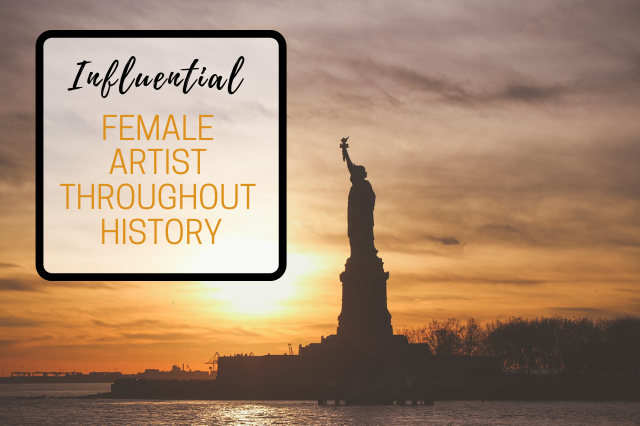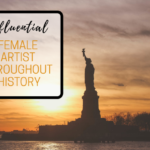Women contributed to cultural art since ancient times. Unfortunately, there creations never received the same recognition or appreciation compared to the works created by their male counterparts. The pieces accomplished by creative ladies was commonly considered a craft project and not fine art. From the late 1960s, attitudes about art created by women began changing thanks to the feminist movement. Tana Taylor Adoption Photography Studio shares two of their favorite female artists.
Mary Elisabeth Louise Vigee Le Brun (1755-1842)
She was born in Paris to artist Louis Vigee who provided her with artistic instruction. At the age of six, she was sent to live in a convent for five years. At the age of 12, her father died and her mother married Jacques-Francois Le Sevre who was a wealthy jeweler. In addition to being accepted by high society, the budding artist was taken under the wing of masters Gabriel Francois Doyen, Jean-Baptiste Greuze and Joseph Vernet.
By the time she became a teenager, Vigee was painting professionally. However, she lost her studio due to working without a license. She then attended the Academie de Saint-Luc. The institution exhibited her works in Salon during 1774. Two years later, she married Jean-Baptiste Pierre Le Brun, himself an artist and art dealer. While residing at the Hotel de Lubert in Paris, she held exhibitions of her work. Her husband’s family too had many connections, and Vigee Le Brun began painting portraits of nobles.
The artist’s reputation gained her an invitation to the Palace of Versailles. Marie Antoinette was so enamored with her work that Vigee Le Brun completed dozens of portraits of the royal family. Her paintings also served to paint Antoinette in a more pleasing image as a devoted mother in order to gain acceptance from the public.
She submitted a number of works to the Academie Royale de Peinture et de Sculpture in 1783, which included “La Paix qui ramene l’Abondance. However, the academy did not consider her work academic or historic. She also met with opposition due to the fact that her husband was an art dealer. However, the institution’s disapproval was overruled by Louis XVI because of his wife’s influence.
Her connection with the royal family put her and her family in danger during the years of the French Revolution. As such, Vigee Le Brun left France with her young daughter. During this time she lived and worked in Austria, Italy and Russia. Her connections with aristocracy gained her recognition. While in Rome, her paintings were wonderfully received and she was admitted to the Accademia di San Luca.
While traveling throughout Europe, some of her subjects included Poland’s King Stanislaw August Poniatowski and the family of Catherine the Great. Catherine herself was to have her portrait painted. Unfortunately, a stroke claimed her life before the project began.
While living in Saint Petersburg, Vigee Le Brun became a member of the Academy of Fine Arts of Saint Petersburg. After the endeavors of her family cleared her as a revolutionary, she was able to return to France during the reign of Napoleon. At the turn of the century, she traveled to England and painted a number of nobles including Lord Byron. She went to Switzerland in 1807 were she was welcomed into the Societe pour l’Avancement des Beaux-Arts of Geneva.
Vigee Le Brun continued painting into her 50s along with writing her memoirs. She remained in Paris until her death. Her legacy includes 200 landscapes and 660 portraits. In 2016, the Metropolitan Museum in New York exhibited 80 of her neoclassical works. The event was only the second to highlight a solo artist.
Mary Stevenson Cassatt (1844-1926)
The Impressionist painter was born and raised in Allegheny, Pennsylvania. Her father was a land speculator and a stockbroker while her mother was from a family of bankers. Growing up, she and her family spent time in Berlin, London and Paris. It has been theorized that her appreciation for art developed during the Paris World’s Fair in 1855 while viewing the works of Corot, Degas and Pissaro.
Against her parent’s wishes, Cassatt went to the Pennsylvania Academy of Fine Art to study painting at that tender age of 15. Although 20 percent of the students were female, Cassatt was the only student desiring to become a professional artist. While residing with her family in 1870, she entered two of her creations in a New York art gallery. Although she gained fans, her work did not sell.
Discouraged, the young artist moved to Chicago. However, she lost a number of her paintings in the Great Chicago Fire of 1871. Shortly thereafter, her works caught the eye of the Archbishop of Pittsburgh. He hired her to make replications of works created by Corregio. She was paid enough in advance to travel to Italy and stay for awhile. With her spirit renewed, Cassett and fellow artist Emily Sartain journeyed to Europe. Within months, her painting entitled “Two Women Throwing Flowers During Carnival gained recognition and was sold in Salon in 1872. She was also well received by the art community in Parma.
After suffering further rejections, Cassett was invited by Edgar Degas to exhibit her paintings in a venue developed by the group of renowned Impressionist artists. Originally inspired by the works of Degas, she accepted his invitation and began creating more paintings. Some of her newly accomplished works included “Little Girl in a Blue Armchair, “Portrait of an Artist” and “Reading Le Figaro.”
Under the guidance of Degas, Cassatt became proficient in using pastels. She soon became popular for her works that often featured mothers and children. While her early works contained the images of relatives, friends or clients, later on, she hired professional models. Due to cataracts, diabetes, neuralgia and rheumatism, Cassett was forced to stop painting by 1914. In 2005, her paintings sold for up to $2.8 million.

